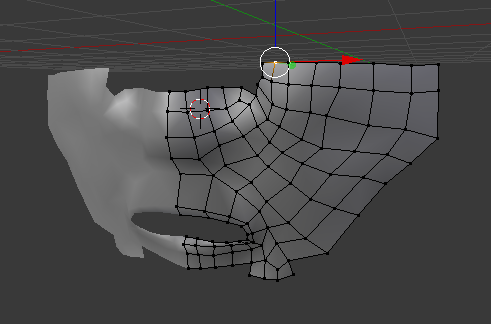Whenever I look at professionally made meshes, the quads are all aligned in a nice even grid pattern and they seem to flow smoothly in clean lines. My meshes tend towards looking like a spiderweb (not necessarily a jumble of tris and n-gons, but still a bit awkward). What am I doing wrong, and how can I correct it?

You could select the offending edge loops and use the relax function in looptools. That should smooth them out a little.
But maybe don’t get hung up on that kind of thing. Pretty patterns don’t make a good model. Keep your eye on the end result. Remember that the pros you speak of can spend a lot of time making edits and corrections manually to get the desired outcome. There’s very few shortcuts.
low poly models generally don’t shade all that well by default. Although you can alter that slightly with strategically placed sharp edges.
If you need detail, and poly count is not an issue, try out sub-surf. 
I know, what I am a bit more concerned about what it says about my workflow. When I look at some of the professional work, I can’t even tell the verts have been moved by a person, because they flow so seamlessly into each other. My workflow generally consists of a lot of extruding verts and edges and tweaking them a bit. I’m just wondering if there isn’t something more efficient?
Might be easier to place verts if you model over something. (Retopology style workflow.) Modeling from scratch “in the air” can be tricky for many. Retopo allows you to get away with using a messier base mesh (usually sculpted with dyntopo), and not worrying about good topology until later.
As for tweaking, there’s edge slide “g g”, vertex slide “shift V”, shrink/fatten “alt-S”, and smooth vertex from the vertex operations menu. It may take a whole lot to get things right. Other than that, loop tools and bsurfaces add ons have lots of handy tools to help with things in terms of placement or redistribution. Takes a while to learn those tools.
It’s something you learn with repetition.
Keep your quads square, avoid rectangles as much as reasonably possible on curved surfaces. Even most pro’s will do some fine touches of pushing and pulling at the end of modelling, the need becomes less and less as you build up experience.
You can use proportional editing to move a bunch of vertices at a time instead of editing them one by one. You can also use the sculpting tools to smooth/grab the vertices.
the subsurf is your friend!
smooth modifier is a good one too.
Exactly … subdivision surface will rearrange the meshes in an even way.
In fact i see different things… and they have all been cited i think.it is a bit a compilation of all that.
- Manually edit the meshes, (need experience for dont have too much to do )…
- Retopo
- Proportional is enabled when creating the mesh ( can help, but it is sometimes difficult on some parts )
- they have at a moment apply subsurface or they show you the meshes with the modifier enabled.
Sometimes it is just nearly everything of that